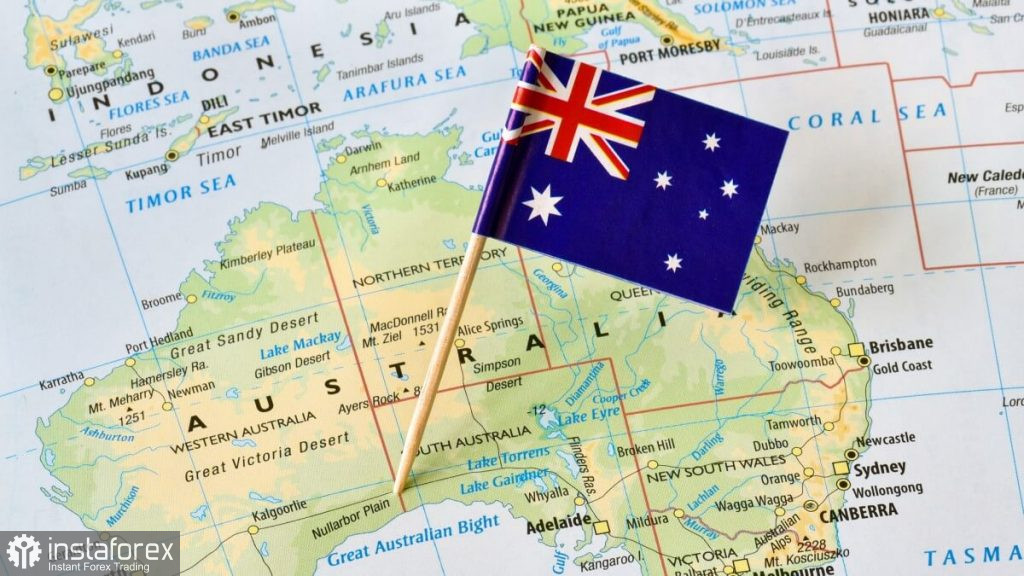The AUD/USD pair has come under heavy pressure this week, following the release of the Australian labor market report. The data unexpectedly came out in the red zone, and the aussie hit a new weekly low, sliding to 0.6876. However, we can say that by the end of the week the bears couldn't take their successes, on Friday, the aussie regained some of the lost ground and got back to the 69th figure area.

Take note that the aussie has yet to face its main "test" – Australia's inflation report for the 4th quarter of 2022 will be published next week. If this report disappoints the AUD/USD bulls, then their ambitions will have to wait: the pair can only rise further if the greenback gets even weaker. But today, all is not lost, although the "Australian Nonfarm" has significantly spoiled the fundamental background for the pair.
Aussie lost an ally
Take note that the Australian labor market has been an ally of the aussie over the past few months. The unemployment rate gradually decreased during the first half of last year, and since June it has fluctuated in the range of 3.4-3.5% (for comparison, we can say that the peak was recorded in October 2021 at around 5.2%). The growth rate of the number of employed has recently shown a positive trend (October and November should be highlighted in this context). Given the trends of recent months, we didn't really expect any "catch" from the December report: experts predicted a decrease in unemployment and an increase in the number of employed.
However, the report was, to put it mildly, controversial, and it is not at all surprising that the market interpreted it against the aussie. Traders focused on the fact that unemployment remained at 3.5%, while according to forecasts, it should have fallen to 3.4%. The proportion of the economically active population unexpectedly dropped to 66.6% (although an uptrend was observed over the past three months). But most of all, the growth in the number of employees turned out to be a disappointment: the indicator came out at -14,600, despite the fact that experts expected to see a 27,000 increase. However, one point needs to be clarified here. The structure of this component indicates that in December the level of part-time employment significantly decreased (-32,200). While the number of full-time employees increased by 17,600, it is known that full-time positions offer a higher level of wages and a higher level of social security, compared to temporary part-time jobs. And yet, the "overall result" was against the aussie (especially since the 17,000th increase in full employment was not impressive). Australian Nonfarm put a lot of pressure on AUD/USD. Bulls were forced to retreat from the key resistance level of 0.7000.
All is not lost yet
As a result of the trading week, bulls still managed to return to the area of the 69th figure. Therefore, the 0.7000 price barrier is still on the horizon. The inflation report, which will be published in Australia next week, can play a decisive role here.
According to preliminary forecasts, the consumer price index in the 4th quarter will come out at around 1.8% in quarterly terms (in the 3rd and 2nd quarters, an increase of 1.8% was recorded). While in annual terms, an increasing trend can be recorded - experts predict growth to a record 7.5%. If both components turn out to be in the green zone, the pair will try to gain a foothold in the area of the 70th figure.
Let me remind you that the Reserve Bank of Australia slowed down the pace of rate hikes to 25 points last fall - earlier than many central banks of the world's leading countries. Therefore, this issue was removed from the agenda a few months ago. However, in December, there were rumors that the RBA might even pause monetary tightening. And although representatives of the Australian central bank have repeatedly denied such intentions, the relevant rumors do not subside. And if inflation indicators in Australia show a downtrend next week, talk of a "dovish stance" will again be on the agenda, especially amid the weak "Australian Nonfarm".
Findings
Despite the disappointing data in the labor market, it is still too early to write off the Australian dollar. A strong inflation report may bring the aussie back to life, especially amid a weakening greenback. If Australian inflation disappoints, then the bullish outlook for AUD/USD will depend solely on the US dollar. Given the high degree of uncertainty, before the release of the aforementioned inflation report (Wednesday, January 25) for the pair, it would be better to take a wait-and-see attitude.
 English
English 
 Русский
Русский Bahasa Indonesia
Bahasa Indonesia Bahasa Malay
Bahasa Malay ไทย
ไทย Español
Español Deutsch
Deutsch Български
Български Français
Français Tiếng Việt
Tiếng Việt 中文
中文 বাংলা
বাংলা हिन्दी
हिन्दी Čeština
Čeština Українська
Українська Română
Română

